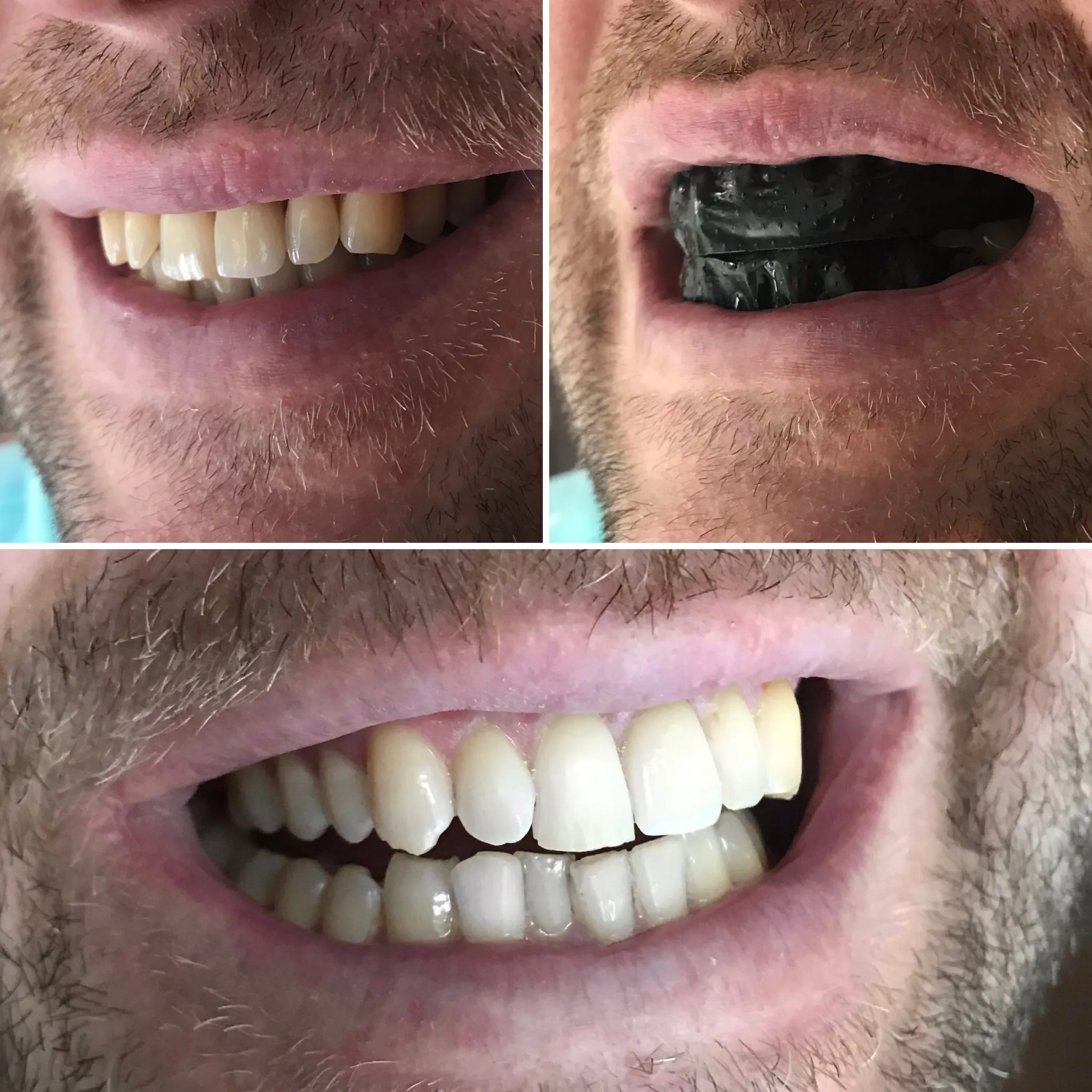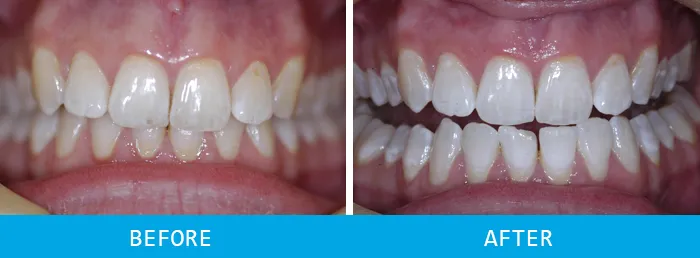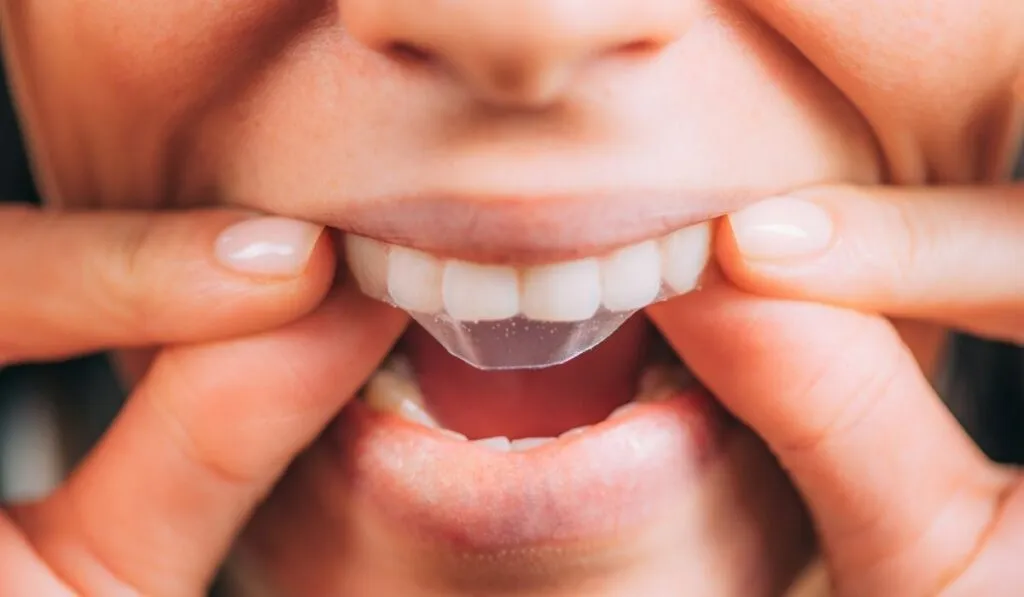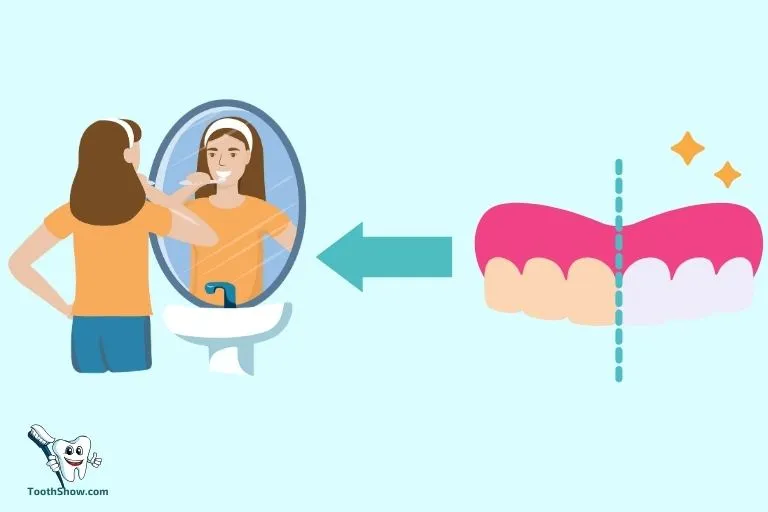What Are Whitening Strips?
Whitening strips are a popular and convenient method for improving the appearance of your smile. These thin, flexible strips are coated with a whitening agent, typically hydrogen peroxide or carbamide peroxide, designed to adhere to the surface of your teeth. When applied correctly, the whitening agent penetrates the enamel, breaking down stain molecules and lightening the overall shade of your teeth. They are readily available over-the-counter and offer a less expensive alternative to professional teeth whitening treatments. Understanding how they function is the first step toward achieving a brighter smile.
How Whitening Strips Work
The whitening process begins when the active ingredient in the strip, usually a peroxide-based compound, comes into contact with your teeth. This agent oxidizes the stain molecules within the enamel. As the oxidation process occurs, the stains are broken down, and the teeth gradually appear lighter. The effectiveness of whitening strips depends on several factors, including the concentration of the active ingredient, the duration of application, and the frequency of use. Consistency is key, as you typically need to use the strips for a certain period to see noticeable results. The level of initial staining and the natural shade of your teeth will also influence how well the strips work for you.
Why Brush Teeth Before Whitening Strips?

Brushing your teeth before using whitening strips is a crucial step for maximizing their effectiveness and ensuring your oral health. It’s not just about a cosmetic improvement but a necessary preparation for the whitening process. This simple practice can significantly enhance the results of your whitening treatment, making your efforts more worthwhile. It is generally recommended to brush your teeth gently but thoroughly before applying the strips, allowing the whitening agent to work most effectively. By removing plaque and debris, you create an optimal environment for the whitening agents to penetrate and work directly on the tooth surface.
Remove Plaque and Debris
Brushing before whitening strips removes plaque, food particles, and other debris that accumulate on your teeth throughout the day. Plaque is a sticky film of bacteria that constantly forms on the teeth. If left undisturbed, plaque can hinder the whitening agent from making direct contact with the enamel. By removing this barrier, you ensure the whitening agent can effectively reach the tooth surface, leading to better results. The removal of debris helps create a cleaner surface for the strips, allowing them to adhere properly and work as intended. This step ensures the whitening process starts with a clean slate, maximizing the potential for a brighter smile.
Enhance Whitening Results
Brushing before applying whitening strips can enhance the whitening results. When the surface of the teeth is free from debris, the whitening agent can directly target the stains. This direct contact helps to ensure the active ingredients in the whitening strips can penetrate the enamel and effectively break down the stain molecules. A clean tooth surface allows for more even and consistent whitening, as the agent is not hindered by plaque or other obstructions. By removing the barriers, the whitening strips can work more efficiently, potentially leading to quicker and more noticeable results. This prep work helps to optimize the outcome of your whitening treatment, making the process more effective and providing a more brilliant smile.
Reduce Sensitivity

Brushing before applying whitening strips can help to reduce the risk of tooth sensitivity. When plaque and debris are present, they can trap the whitening agent against the enamel. This can increase the concentration of the whitening agent on the tooth surface, potentially leading to increased sensitivity. By brushing and removing these barriers, you can minimize the concentration of the whitening agent in direct contact with the teeth. Brushing also can help reduce the amount of whitening agent that gets absorbed, which can help to prevent irritation and sensitivity. This pre-whitening step can make the whitening process more comfortable and less likely to cause any unpleasant sensations during the whitening treatment.
The Best Time to Brush Teeth Before Whitening Strips
Timing is critical when it comes to brushing before applying whitening strips. The best practice is to brush your teeth approximately 30 minutes before using the strips. This interval is essential for several reasons. Brushing too close to the application time can leave traces of toothpaste on your teeth, creating a barrier that reduces the effectiveness of the whitening agent. The 30-minute window allows your mouth to return to its natural pH, ensuring the strips adhere and function optimally. This timing gives your saliva enough time to re-establish the natural protective layer on your teeth. By following this timeline, you ensure that your teeth are clean and prepared to receive the whitening treatment.
Brushing Technique
The method you use to brush your teeth is as important as when you brush. Always use a soft-bristled toothbrush to avoid damaging the enamel. Brush your teeth gently, using a circular or back-and-forth motion, and apply moderate pressure. Brushing too hard can cause your gums to recede and damage the enamel, counteracting your whitening efforts. Ensure that you reach all surfaces of your teeth, including the front, back, and chewing surfaces. Brush each section for approximately 30 seconds. Don’t forget to brush the sides of your teeth and in the hard-to-reach areas. Careful brushing ensures the thorough removal of plaque and food particles, creating a clean surface for the whitening strips. By following this simple approach, you can improve the effectiveness of your whitening treatment and maintain good oral health.
Waiting Period

After brushing, a waiting period is recommended before applying whitening strips. As mentioned earlier, it’s generally advisable to wait about 30 minutes. This waiting period is especially important to allow your mouth to re-establish its natural pH level. When you brush your teeth, you’re introducing cleaning agents into your mouth, which can affect the effectiveness of the whitening strips. The 30-minute waiting period helps your saliva restore the mouth’s natural balance, creating the optimal conditions for the whitening agent to function effectively. This helps ensure the whitening strips can adhere properly to your teeth and begin the whitening process. Waiting also helps minimize any potential sensitivity.
The Right Toothpaste to Use
Choosing the right toothpaste plays a significant role in your oral care routine, especially when using whitening strips. It’s best to choose a non-whitening toothpaste before applying the strips. Avoid toothpaste with a lot of abrasive ingredients that can damage the enamel. Look for a toothpaste that focuses on cleaning and removing debris without adding a layer that prevents the whitening agent from doing its job. Always check the ingredient list. Avoid toothpastes with high concentrations of abrasive materials or harsh chemicals. The right toothpaste supports the whitening process by preparing your teeth for the best possible results. It sets the stage for the whitening strips to work their magic, leaving you with a brighter, healthier smile.
Ingredients to Avoid
Some ingredients in toothpaste can reduce the effectiveness of whitening strips, so it’s helpful to be mindful of what to avoid. Steer clear of toothpaste that contains excessive fluoride, as too much can interfere with the whitening process. Ingredients like sodium lauryl sulfate (SLS) might irritate and should be used in moderation. Abrasive ingredients such as silica can also be problematic, especially if used vigorously. These ingredients can leave a residue on your teeth or cause sensitivity. Prioritize gentle, non-abrasive toothpastes when brushing before whitening strips to get the best results. Review the ingredient list and select a toothpaste that cleans without creating any unwanted barriers. This will help your teeth be more receptive to the whitening process.
The Right Way to Apply Whitening Strips

Applying whitening strips correctly is crucial for achieving the desired results. Start by drying your teeth with a clean cloth or paper towel to make sure the strips can properly adhere. Peel the strip from its backing. Place the strip along the gum line, pressing it gently against your teeth. Ensure the strips cover the front surfaces of your teeth. Make sure the strips don’t overlap or touch your gums excessively. Fold the excess strip over the back of your teeth for the upper teeth and the inside of your teeth for the lower teeth, to secure them in place. Follow the instructions on the package regarding the duration of application, usually around 30 minutes. The key is to ensure that the strips are making good contact with your teeth to allow for effective whitening.
Step-by-Step Application
Here’s a step-by-step guide to applying whitening strips correctly, ensuring the best results. First, clean your teeth by brushing, waiting approximately 30 minutes afterward. Once you’re ready, remove the strip from its packaging and dry your teeth gently. Apply the longer strip to your upper teeth and the shorter one to the lower teeth. Carefully align the strips with your gum line. Use your fingers to press the strips firmly onto your teeth, ensuring the entire surface is covered. Fold the excess strip material over the back of your teeth for the top strip and the inner side for the lower strip. Allow the strips to remain in place for the recommended amount of time, usually indicated on the product packaging. After the specified time, remove the strips and discard them. Rinse your mouth and look forward to a brighter smile.
Proper Application Tips
For the best results from your whitening strips, consider these key tips during the application process. Ensure your teeth are dry before applying the strips, as moisture can affect adhesion. When placing the strips, focus on getting even coverage over the front surface of your teeth. Gently press the strips against your teeth to ensure good contact. Avoid touching your gums excessively to minimize irritation. Do not eat, drink, or smoke while the strips are in place, as this can affect their effectiveness. After removing the strips, rinse your mouth with water to remove any remaining residue. Consistent application, as per the instructions, is vital. Following these tips ensures you use your whitening strips effectively and minimize potential issues.
Common Mistakes to Avoid

Avoid common mistakes to enhance your whitening strip results. One common mistake is applying strips to wet teeth. This can hinder the strip’s adherence and reduce its effectiveness. Another is leaving the strips on for longer than recommended, which can lead to increased sensitivity or gum irritation. Avoid eating, drinking, or smoking while the strips are applied, as these can affect the whitening process. Overlapping the strips can also cause uneven whitening and should be avoided. Being inconsistent with your application is also a mistake, follow the instructions consistently for best results. By being mindful of these common mistakes, you can ensure that you’re making the most of your whitening treatment and achieving a beautiful smile.
Potential Risks and Side Effects
While generally safe, whitening strips can have potential risks and side effects. The most common is tooth sensitivity, which can range from mild to more pronounced. Gum irritation is another potential side effect, often characterized by redness or soreness. In some cases, you may notice uneven whitening, where some areas of your teeth are lighter than others. For individuals with existing dental issues, such as cavities or gum disease, whitening strips can exacerbate these problems. Be sure to read and follow the instructions carefully to minimize these risks. If you experience any severe discomfort or have concerns, consult your dentist. Understanding the potential risks can help you make informed choices and manage any adverse effects.
Tooth Sensitivity
Tooth sensitivity is one of the most frequently reported side effects of using whitening strips. This sensitivity can manifest as a sharp pain or discomfort when consuming hot, cold, sweet, or acidic foods and drinks. Sensitivity can be caused by the whitening agent, which penetrates the enamel and can temporarily affect the nerves in your teeth. You can manage sensitivity by using toothpaste designed for sensitive teeth, avoiding extremely hot or cold foods, and reducing the frequency or duration of your whitening treatments. The level of sensitivity varies from person to person, and in most cases, it subsides after a few days or after you have stopped using the strips. If sensitivity becomes persistent or severe, consult your dentist for personalized advice.
Gum Irritation
Gum irritation is another potential side effect of whitening strips. The active ingredients in the strips, such as hydrogen peroxide, can sometimes irritate the soft tissues of the gums. This irritation may show as redness, swelling, or soreness along the gum line. To minimize gum irritation, avoid applying the strips directly onto your gums and be careful not to overlap the strips excessively. If you experience gum irritation, it is best to take a break from using the whitening strips and consult with your dentist. Maintaining good oral hygiene, brushing gently, and using a soft-bristled toothbrush can also help prevent and manage gum irritation. In most cases, gum irritation resolves quickly once the use of the strips is discontinued.
Best Practices for Optimal Results
Achieving optimal results from whitening strips involves following some best practices. First, brush your teeth gently about 30 minutes before applying the strips. Use the strips consistently as directed on the packaging. Avoid food and drinks during the treatment period. Regularly monitor your teeth and gums for any signs of sensitivity or irritation. Maintain a good oral hygiene routine, including regular brushing, flossing, and dental check-ups. Store your whitening strips properly, away from heat and moisture, to preserve their effectiveness. These practices will not only improve the outcome of your whitening treatment but also help to maintain your overall oral health. The key to maximizing your results is a combination of preparation, consistency, and diligent care.
Consistency and Patience
Consistency and patience are key to achieving the best outcomes from whitening strips. Whitening is not a quick fix. Follow the instructions on the product packaging without skipping applications. Realize that the degree of whitening will depend on your natural tooth shade and the level of staining. Don’t be discouraged if you don’t see immediate results. Results often become noticeable over time, usually after several days or weeks of consistent use. Regularly assess your progress and make adjustments to your oral care routine if necessary. Patience is crucial, and maintaining a consistent routine will allow you to achieve the desired results safely. By committing to the process, you can look forward to a brighter and more confident smile.
